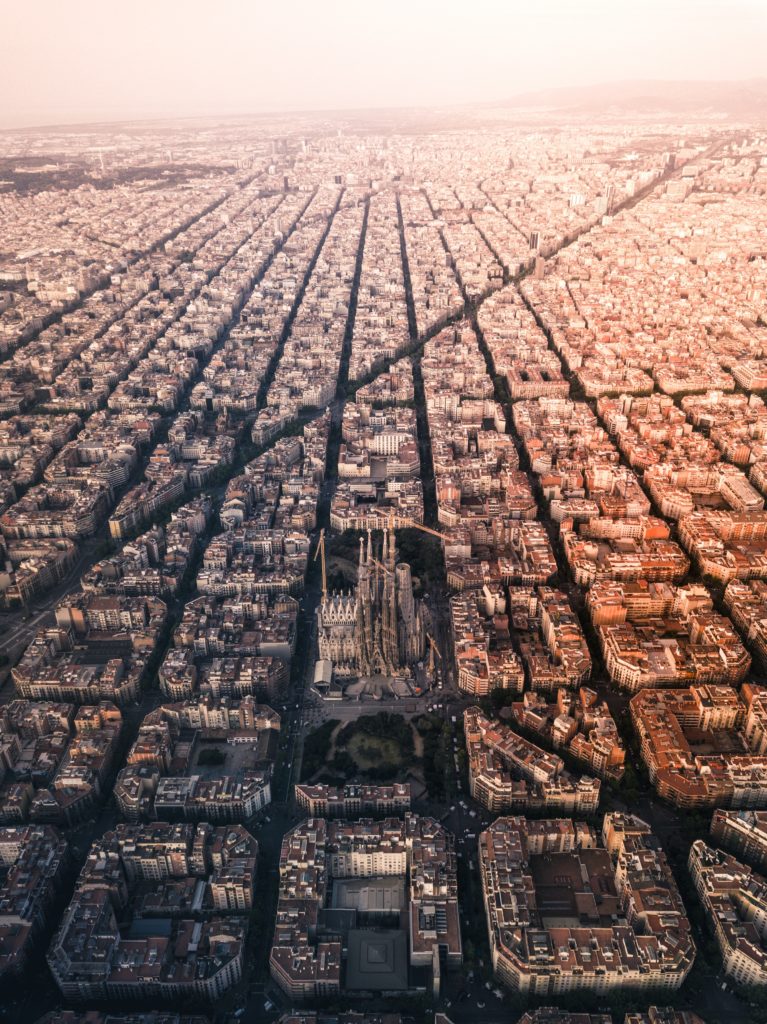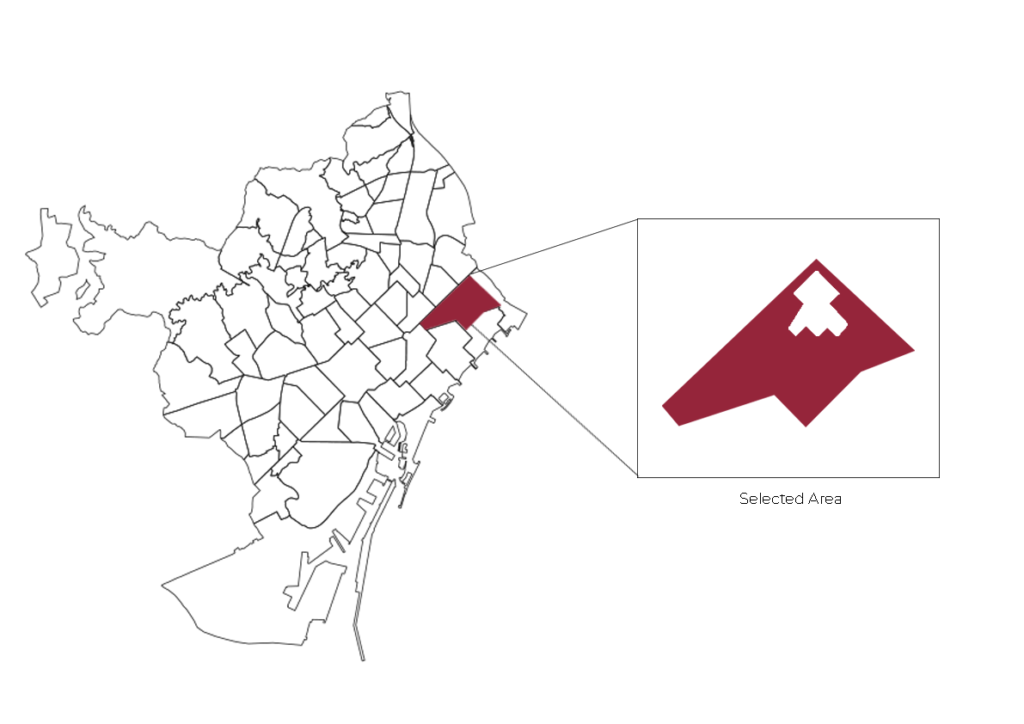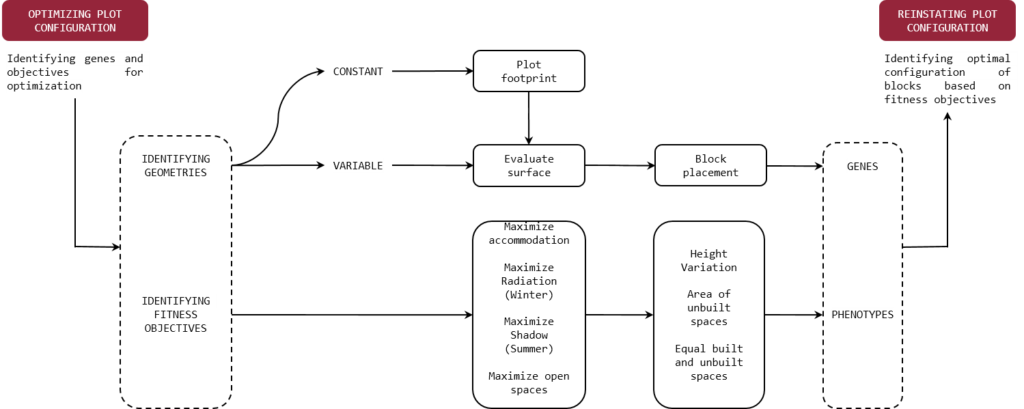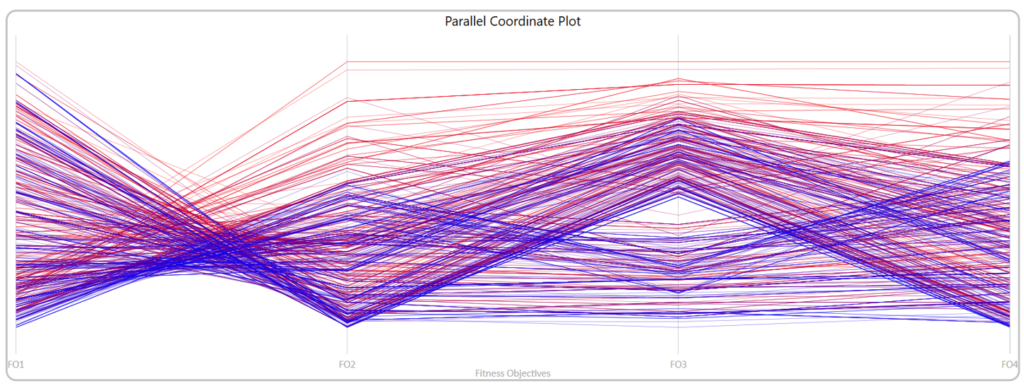Before the implementation of Cerda’s radical expansion plan, Barcelona was bound by their medieval walls and making every effort to accommodate its overflowing population. Cerda’s plan took into account scientific objectives that would create a city that is not just a well planned co-habiting space but also user-centric. Some of his objectives were gardens in the center of the blocks, air required per person and chamfered corners for smooth traffic flow. With the ever-growing inflow of people, Barcelona is looking at a similar situation yet again. So how can we efficiently densify this revolutionary city?

This project was developed to algorithmically optimize a proposed densification plan , in the selected area located in the district of Sant Andreu, which was narrowed down through an analysis of the economic activity patterns, landuse and proximity to urban amenities. This was done using the Wallacei X component in grasshopper for the optimization process.

This selected area held certain challenges that could be turned into development strategies for the neighbourhood to maximize its potential.

The existing urban morphology consisted of empty plots, dilapidated buildings and underutilized rooftops and the proposed phenotypes were ground up construction, towers and rooftop expansion respectively.


Based on this, four fitness objectives were identified that would facilitate an optimal module configuration in the selected plots.

The process started with identifying geometries (building footprints) and fitness objectives, wherein the geometry surfaces would be evaluated based on these objectives. The design problem was formulated based on the gene pools that would enable the fitness objectives to be converted to phenotypes, ergo optimizing plot configuration. The gene pools were formulated considering height variation, area of unbuilt spaces and equal distribution of built and unbuilt spaces.

The evolutionary matrix was composed to understand the relationship between each fitness objective and the gene pools.

After the simulation was run, the Parallel Coordinate Plot generated helped to visualize the relationship between the fitness objectives. Rationally, these objectives are classical planning parameters that are complementary in nature.

The solutions generated after the optimization process were based on the fitness objectives that gave results that considered optimal heights, area of unbuilt space and equally distributed built and unbuilt space.

Out of the solutions, the selected urban morphology was from Generation 39, Individual 10

The generated results of this simulation helped to make informed decisions in the design process.


